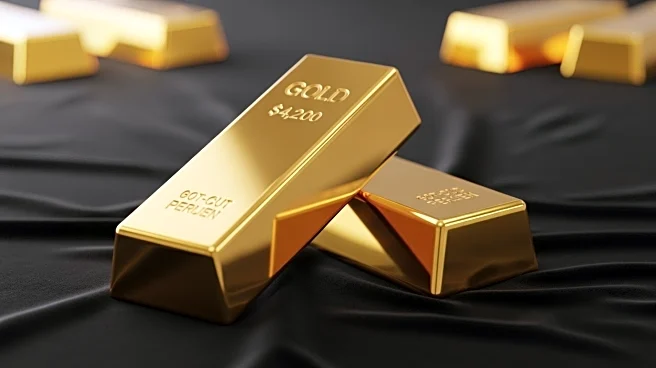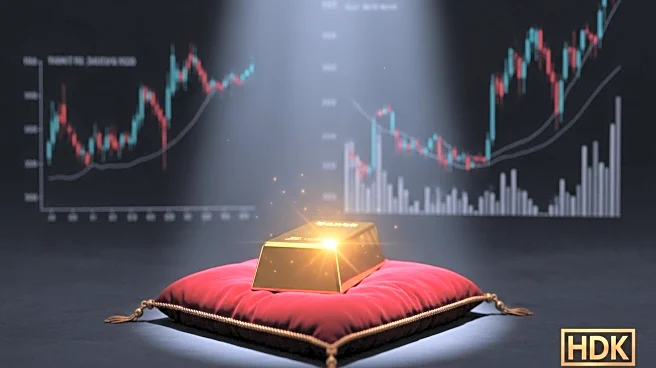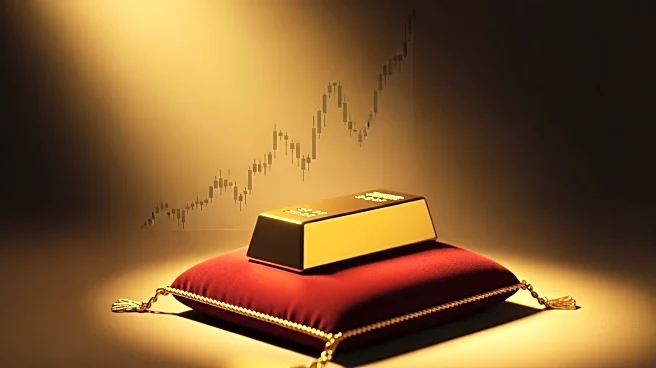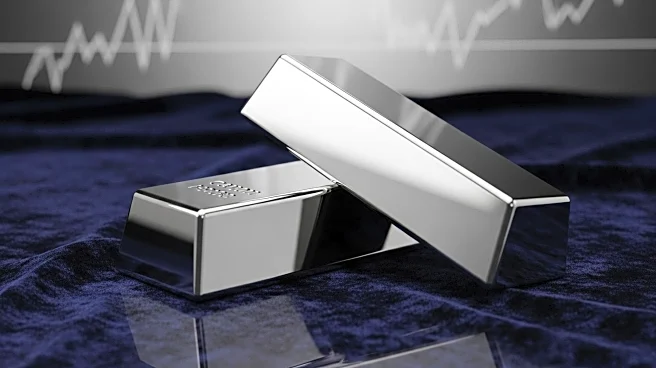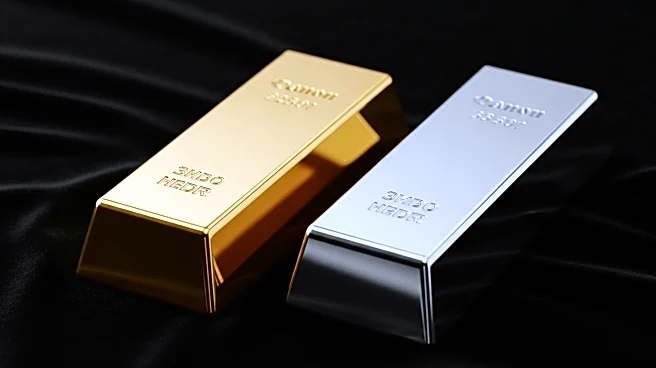What's Happening?
Gold prices have reached a record high, surpassing $4,200 per ounce, as investors react to potential U.S. interest rate cuts and renewed geopolitical tensions. Spot gold rose by 1.6% to $4,206.59 per ounce, with
U.S. gold futures for December delivery increasing by 1.4% to $4,222.30. The surge is attributed to factors such as U.S.-China trade tensions, central bank buying, and strong ETF inflows. Analysts highlight the metal's role as a hedge against uncertainty and inflation, thriving in low-rate environments. The Federal Reserve's dovish stance and President Trump's comments on trade ties with China have further fueled the safe-haven demand.
Why It's Important?
The significant rise in gold prices underscores the impact of geopolitical and economic uncertainties on investor behavior. As a traditional hedge, gold's appeal increases during periods of instability, influencing market dynamics and investment strategies. The anticipation of rate cuts by the Federal Reserve could enhance gold's attractiveness, affecting financial markets and monetary policy. This development highlights the interconnectedness of global trade, currency markets, and commodity prices.
What's Next?
Investors are watching the U.S. government shutdown, which may affect economic data and policy decisions. The Federal Reserve's upcoming meetings and potential rate cuts are critical factors that could further influence gold prices. Additionally, the evolving trade relationship between the U.S. and China remains a key driver of market sentiment and safe-haven demand.
Beyond the Headlines
The rise in gold prices may lead to broader shifts in investment strategies, with increased interest in precious metals as a diversification tool. This trend could impact currency markets and global trade dynamics, as changes in gold demand influence exchange rates and international economic relations.
